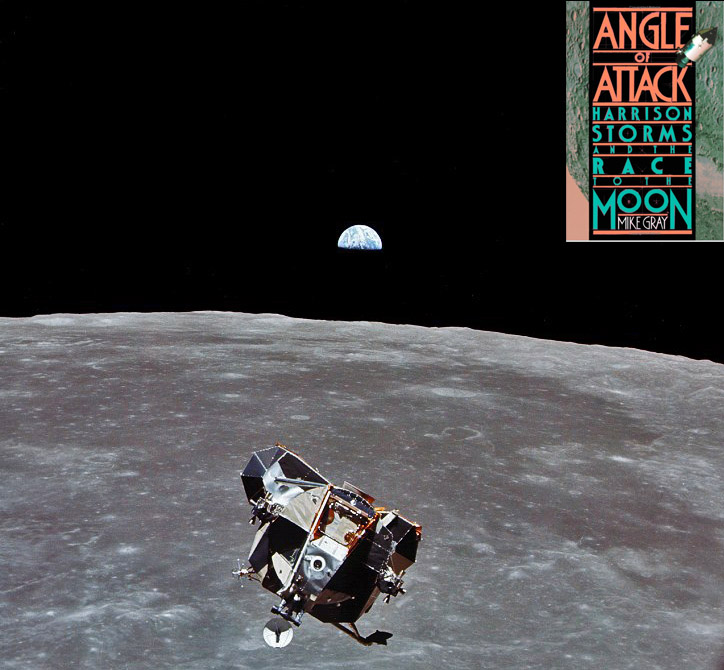Difference between revisions of "July 6, 2013"
| (3 intermediate revisions by the same user not shown) | |||
| Line 1: | Line 1: | ||
__NOTOC__ | __NOTOC__ | ||
=Manufacturing Dreams= | =Manufacturing Dreams= | ||
| + | <!-- Start of content --> | ||
<!-- ws:start:WikiTextHeadingRule:0:<h1> --> | <!-- ws:start:WikiTextHeadingRule:0:<h1> --> | ||
<!-- ws:start:WikiTextLocalImageRule:6:<img src="/file/view/LPOD-Jul6-13.jpg/440582094/LPOD-Jul6-13.jpg" alt="" title="" /> -->[[File:LPOD-Jul6-13.jpg|LPOD-Jul6-13.jpg]]<!-- ws:end:WikiTextLocalImageRule:6 --><br /> | <!-- ws:start:WikiTextLocalImageRule:6:<img src="/file/view/LPOD-Jul6-13.jpg/440582094/LPOD-Jul6-13.jpg" alt="" title="" /> -->[[File:LPOD-Jul6-13.jpg|LPOD-Jul6-13.jpg]]<!-- ws:end:WikiTextLocalImageRule:6 --><br /> | ||
<em>Apollo 11 image [http://history.nasa.gov/ap11ann/kippsphotos/6642.jpg 6642] showing LM approaching command module while passing over Mare Smythii.</em><br /> | <em>Apollo 11 image [http://history.nasa.gov/ap11ann/kippsphotos/6642.jpg 6642] showing LM approaching command module while passing over Mare Smythii.</em><br /> | ||
<br /> | <br /> | ||
| − | I'm 21 years late but I just finished reading Mike Gray's totally engaging 1992 book, <em>[http://www.amazon.com/gp/product/039332513X/ref=pd_lpo_k2_dp_sr_1?pf_rd_p=1535523722&pf_rd_s=lpo-top-stripe-1&pf_rd_t=201&pf_rd_i=B006U5S9HK&pf_rd_m=ATVPDKIKX0DER&pf_rd_r=0JB9QMBNDVKZEWYDN5N0 Angle of Attack - Harrison Storms and the Race to the Moon.]</em> Although it has the hyper-enthusiasm of a 1950s boy's adventure story with a hero and his true-blue companions, the stories of the technical problems that were solved to produce the Apollo success are astonishing. I grew up with the excitement of space, and devoured the Apollo science chronicle of Don WIlhelms' <em>[http://lpod. | + | I'm 21 years late but I just finished reading Mike Gray's totally engaging 1992 book, <em>[http://www.amazon.com/gp/product/039332513X/ref=pd_lpo_k2_dp_sr_1?pf_rd_p=1535523722&pf_rd_s=lpo-top-stripe-1&pf_rd_t=201&pf_rd_i=B006U5S9HK&pf_rd_m=ATVPDKIKX0DER&pf_rd_r=0JB9QMBNDVKZEWYDN5N0 Angle of Attack - Harrison Storms and the Race to the Moon.]</em> Although it has the hyper-enthusiasm of a 1950s boy's adventure story with a hero and his true-blue companions, the stories of the technical problems that were solved to produce the Apollo success are astonishing. I grew up with the excitement of space, and devoured the Apollo science chronicle of Don WIlhelms' <em>[http://www2.lpod.org/wiki/July_22,_2010 To a Rocky Moon]</em>, but I simply did not appreciate the engineering complexity of the spacecraft and the Saturn rockets that took the crews to the Moon and brought them home safely. I recommend this book, and now am starting Mike Collins' <em>[http://www.amazon.com/Liftoff-Story-Americas-Adventure-Space/dp/0802131883/ref=sr_1_8?s=books&ie=UTF8&qid=1373073544&sr=1-8&keywords=liftoff Liftoff]</em> to get the astronaut perspective. There have been so many new space machines since Apollo that I suppose technological problems now have solutions that were inconceivable 60 years ago. But I bet the heart attack-provoking and divorce-causing obsessive dedication and vision of Harrison Storm and cohorts are still required.<br /> |
<br /> | <br /> | ||
<em>[mailto:tychocrater@yahoo.com Chuck Wood]</em><br /> | <em>[mailto:tychocrater@yahoo.com Chuck Wood]</em><br /> | ||
Note: Science may not be Gray's strength for there are a few errors including the last page saying that Apollo samples confirmed that tektites were blasted out of lunar volcanoes; they weren't, they are ejecta from Earth impacts.<br /> | Note: Science may not be Gray's strength for there are a few errors including the last page saying that Apollo samples confirmed that tektites were blasted out of lunar volcanoes; they weren't, they are ejecta from Earth impacts.<br /> | ||
<br /> | <br /> | ||
| + | <p><b>Yesterday's LPOD:</b> [[July 5, 2013|A Tongue & a Bench]] </p> | ||
| + | <p><b>Tomorrow's LPOD:</b> [[July 7, 2013|Chapelet Luna]] </p> | ||
<hr /> | <hr /> | ||
| + | {{wiki/ArticleFooter}} | ||
Latest revision as of 07:29, 28 October 2018
Manufacturing Dreams

Apollo 11 image 6642 showing LM approaching command module while passing over Mare Smythii.
I'm 21 years late but I just finished reading Mike Gray's totally engaging 1992 book, Angle of Attack - Harrison Storms and the Race to the Moon. Although it has the hyper-enthusiasm of a 1950s boy's adventure story with a hero and his true-blue companions, the stories of the technical problems that were solved to produce the Apollo success are astonishing. I grew up with the excitement of space, and devoured the Apollo science chronicle of Don WIlhelms' To a Rocky Moon, but I simply did not appreciate the engineering complexity of the spacecraft and the Saturn rockets that took the crews to the Moon and brought them home safely. I recommend this book, and now am starting Mike Collins' Liftoff to get the astronaut perspective. There have been so many new space machines since Apollo that I suppose technological problems now have solutions that were inconceivable 60 years ago. But I bet the heart attack-provoking and divorce-causing obsessive dedication and vision of Harrison Storm and cohorts are still required.
Chuck Wood
Note: Science may not be Gray's strength for there are a few errors including the last page saying that Apollo samples confirmed that tektites were blasted out of lunar volcanoes; they weren't, they are ejecta from Earth impacts.
Yesterday's LPOD: A Tongue & a Bench
Tomorrow's LPOD: Chapelet Luna
COMMENTS?
Register, Log in, and join in the comments.



